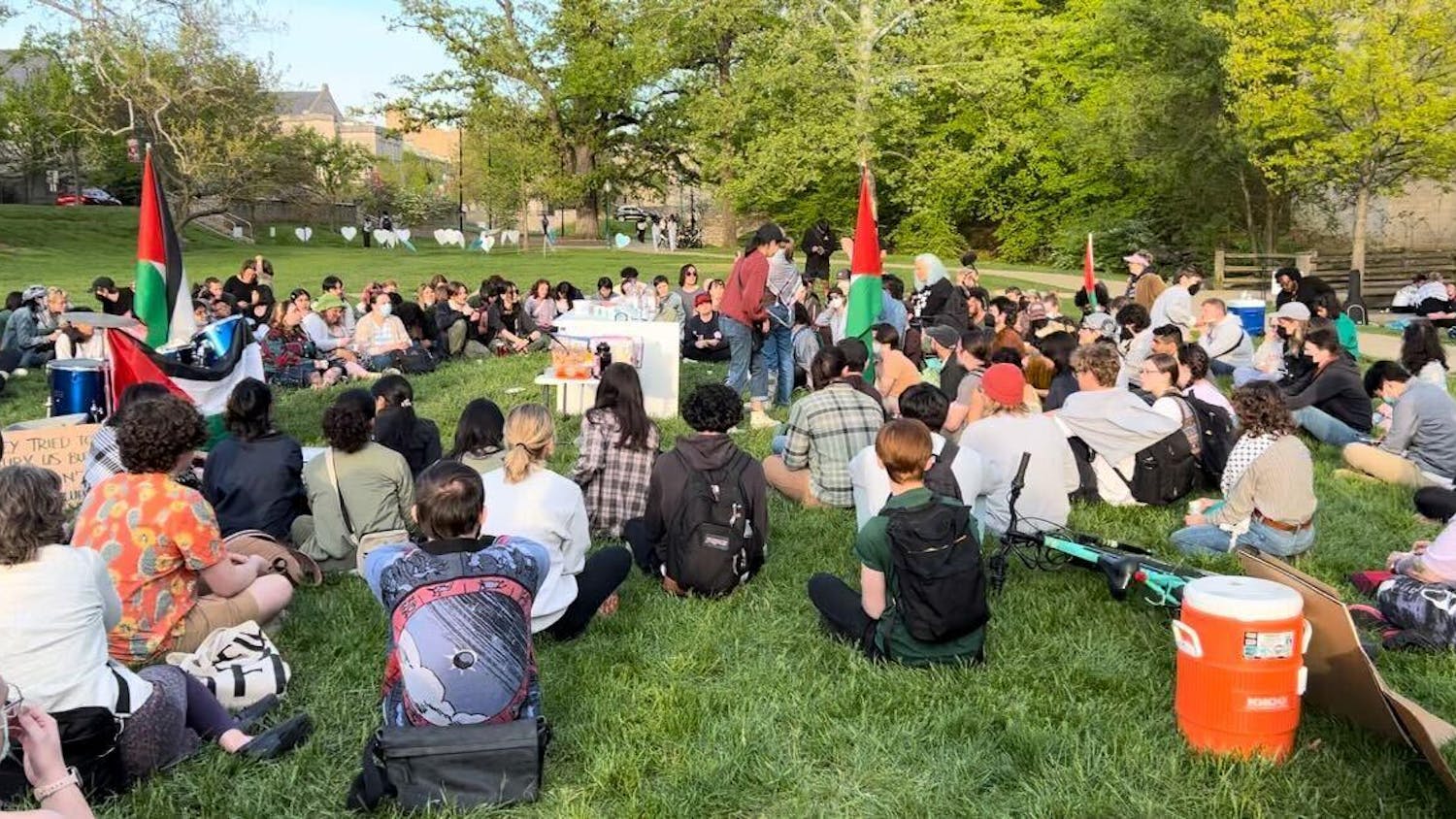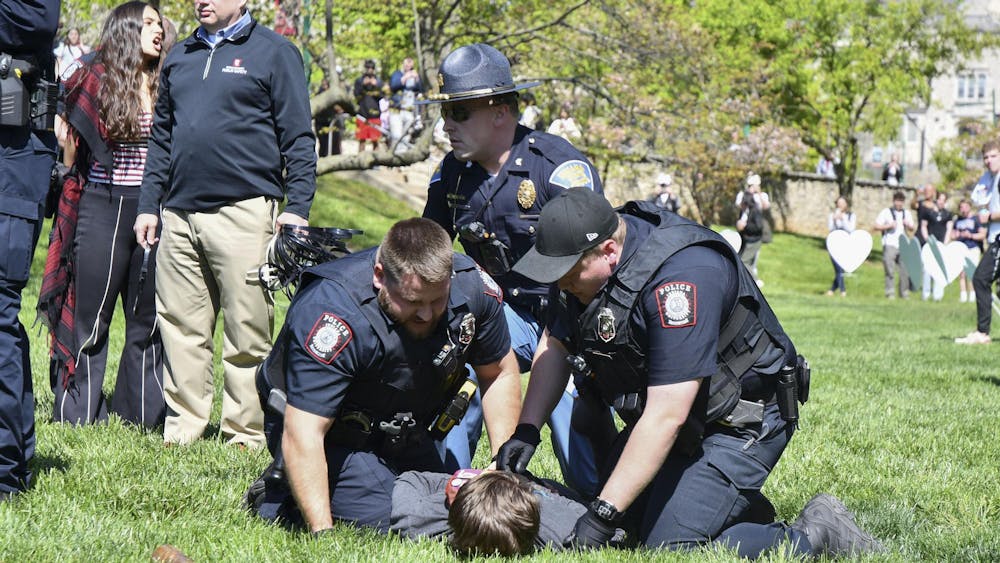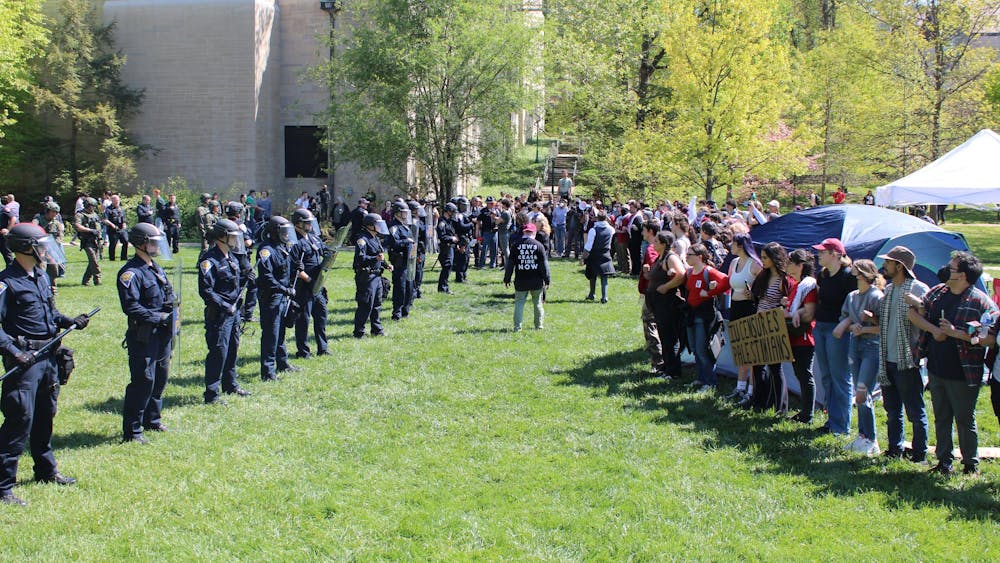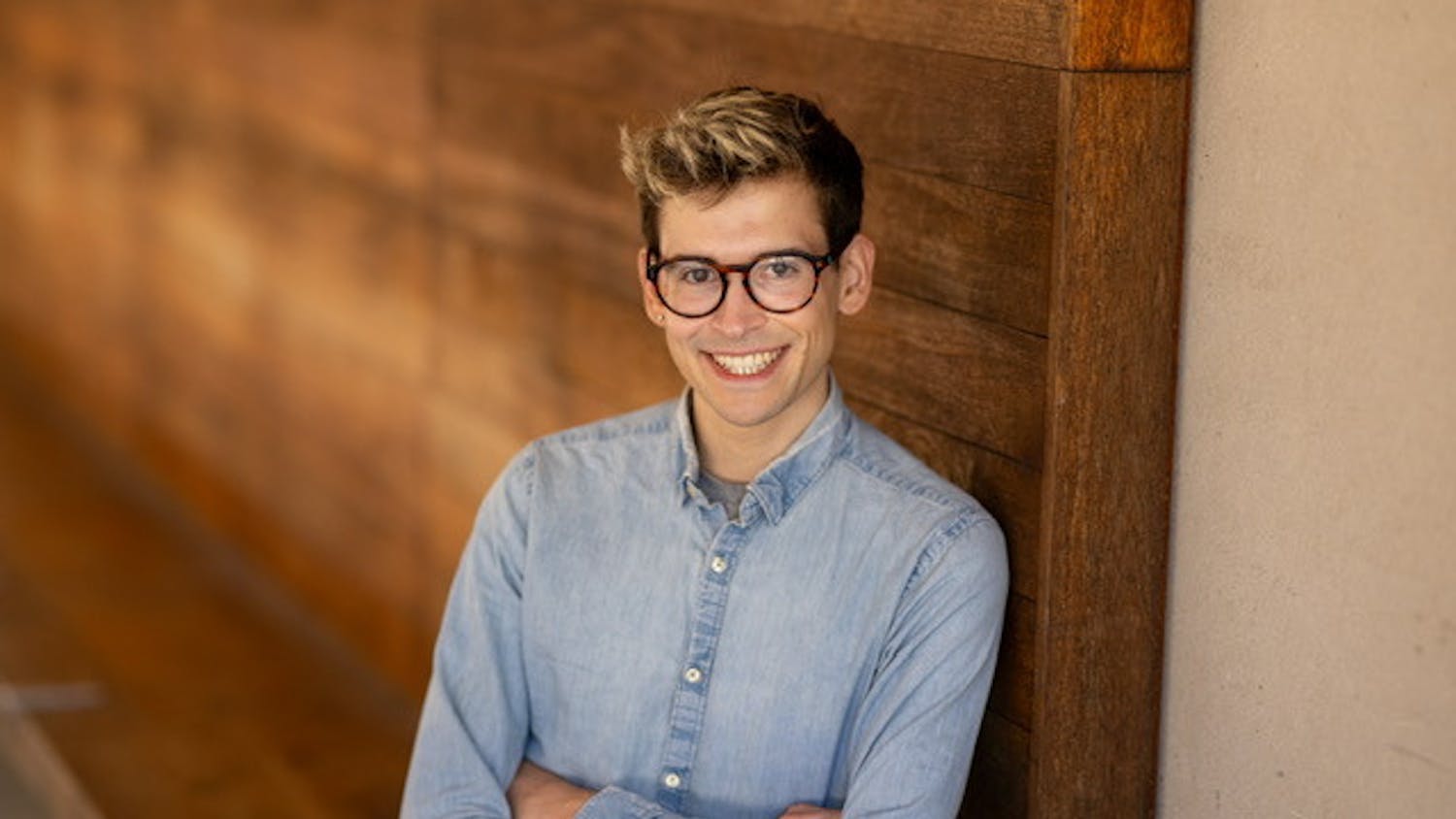The loud and rumbling sounds not only come from the heavy construction of three new towers on the west side of downtown, but also from the amplified excitement and optimism of the city's government, community and business leaders.\nThe Smallwood Plaza, The Regester Place and The Kirkwood will breathe long-needed life back into downtown Bloomington. By this time next year 1,300 new residents and a 100-room hotel will combine with 40,000 new square feet of commercial/retail space and the most parking spaces the area has ever enjoyed. Local leaders believe the stage is set for increased economic expansion.\n"I recall seeing a 1966 news article by an IU professor that said the downtown area would never come back. It's amazing that so much gets done in a small-town base of about 35,000 permanent residents," said Steve Howard, President of the Bloomington Chamber of Commerce.\nAt a time when many downtown areas are struggling through a restructuring economy, Bloomington appears to be shifting into overdrive for a strong prosperous future.
New and existing customers for downtown business\n"So many towns are dying and this [development] is spurring excitement." said Talisha Coppock of the Downtown Bloomington Commission.\nAccording to a survey by the commission, people who live downtown do so for the convenience. They eat at downtown restaurants five to seven times a week, and each resident spends about $250 a month on discretionary items.\n"Most residents have lived downtown for two to three years and like living where the action is," said Coppock. "They also like the historic look."\nWe already have about 900 students living downtown, Coppock added. "Existing and new businesses will develop and benefit from more downtown shoppers." \nShe cites an opportunity to expand hours of operation to serve a student population that starts the day later and stays up later in the evening.\n"The 40 restaurants downtown can expect more activity," she said.\nCoppock imagines that businesses like music stores, bakeries, coffee shops, convenience stores, dry cleaners, ATMs, printing shops and basic service providers will prosper in this environment. \n"We finally have a lot of new commercial square feet to develop," she said. \nCoppock explained that retail and commercial space is required by ordinance for all the first floor properties that border College and Kirkwood.\n "Catching the attention of the potential new purchasing power from pedestrian traffic is the key."
Business gets ready\nLyle Feigenbaum is one that understands this expected influx of customers. Although his expansion of the Scholar's Inn Bakehouse into the former Ben Franklin store is not entirely due to Bloomington's development, he looks forward to providing the demographic change with "New York lounge energy."\n"Bagels are a natural fit for the Bakehouse," he said of the expansion.\nAs this year's winner of Bloomington's Chamber of Commerce Small Business Award, Feigenbaum and the Scholar's employees already understand the needs of the community.\n"Bloomington needs to keep it's uniqueness for those that graduate and come back," said Feigenbaum. "People walking the streets create a vibrant, healthy downtown that adds to that uniqueness."\nOther businesses aren't sitting still, either. Dee Aaron's Boutique in the Fountain Square Mall plans longer hours of operation including opening on Sundays. The store sells distinctive women's clothing and fashion accessories.\n"Even though the construction has hurt some businesses in the area, the big picture shows that the downtown is starting to come back," said Dee Stolberg, owner of the boutique.\nA veteran from the former Whiteside clothing store, Stolberg said she would plan more promotions and vary her product line to include the new demographics. But she sees advantages for other customers as well.\n"Parking is free of charge on the weekends and offers a great time for customers to come downtown," she said. "They can park closer to the downtown stores than if they go to the mall."\n"The University creates the transition that provides many of my out-of-town customers," Stolberg said.
Positive steps to prevent negative outcomes\nDespite the apparent optimism, the possibility for problems still exists.\n"This is what we've been working for," Coppock said, when asked about the negative side associated with the development. "We need to be on our toes for managing a stronger night life."\nThe city needs to "overcome negative possibilities by managing security, making provisions and accommodations for bicycles and pets, increasing lighting, and encouraging delivery services for groceries," she said.\nMaren McGrane, the Bloomington's economic development director said the city doing what it can to bring residents into downtown.\n"It's very important for the city to create the right kind of atmosphere to encourage downtown living," she said.
Parking remains an issue\nPerceptions about parking in the area have long plagued the development of a vibrant downtown economy. Now with more parking spaces some wonder if the perception will still linger.\n"I'd rather have the challenge of a parking problem than boarded up buildings," said Howard.\nBoth Howard and Coppock said they understand the reality and the education process that is needed.\n"Only about 75 percent of the people that live downtown even own cars," said Coppock. "With the development we have the capacity to manage cars, especially if people are willing to make a short walk. One key is to encourage business owners, employees and residents to park farther away."\nCoppock said this initiative will be important to downtown life. \n"The downtown experience was quiet for so long, but in the last 10 to 15 years growth has really taken off," she said. "It's not worth tearing down a whole block for parking. We'll have to learn to share space." \nDuring a transition period she said people need to learn to make trade-offs. However, Coppock acknowledged that getting people to walk farther may be a challenge. \n"The number of steps a customer is willing to take is directly related to the size of the town according to studies," she said. "The smaller the population the fewer steps the customer is willing to take."
More positive development on the way\nAlthough the major construction is significant, Howard says there is more good news to share.\n"The McDoel Switchyard and Trail Corridor is a greenway project that will connect to the downtown development," he said. "Studies show that urban trails add value to create cultural tourism."\nIn addition to the development, Howard sees the increased cooperation of IU and Ivy Tech as the most positive sign for future economic growth. The "breath of fresh air" from the educational system is timely, he said.\n-- Contact staff writer Gary Guffey at gguffey@indiana.edu.





